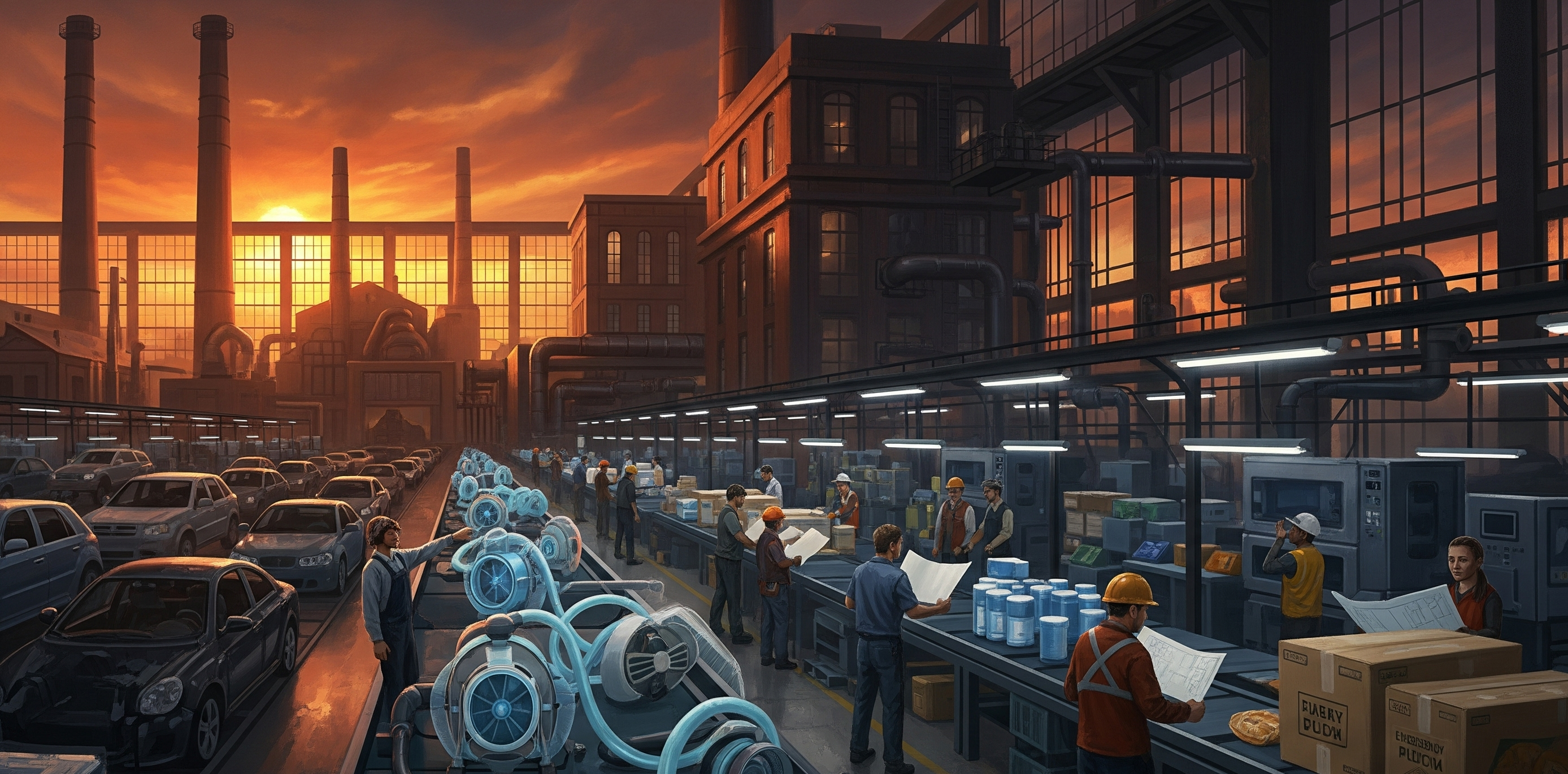
Crisis-Driven Manufacturing
How Global Emergencies Shape Innovation
By Destiny Dickerson
Throughout history, manufacturing has often been regarded as the steady engine of economic growth, operating on predictable systems and employing long-term planning. Yet, it is during times of crisis that manufacturing truly reveals its most dynamic and innovative side. Wars, pandemics, and natural disasters have compelled industries to reassess their production methods, invent new approaches, and mobilize resources at speeds previously thought impossible. These moments of urgency, while disruptive, have consistently driven progress that reshaped industries long after the crises passed.
One of the most striking examples is World War II, when nations transformed their factories almost overnight. In the United States, car manufacturers such as Ford and General Motors ceased producing civilian vehicles and began mass-producing tanks, airplanes, and other military equipment. The famous Ford Willow Run plant became known as the “Arsenal of Democracy,” making one B-24 bomber every hour by 1944. This wartime pressure not only demonstrated the flexibility of mass production but also introduced assembly-line innovations that later benefited consumer industries, from automobiles to household appliances.
Fast forward to the COVID-19 pandemic, another urgent moment where manufacturing had to reinvent itself. Traditional supply chains collapsed under global restrictions, forcing companies to adapt. Distilleries switched from producing spirits to making hand sanitizer, fashion brands turned out masks instead of clothing, and auto manufacturers built ventilators. At the same time, the crisis accelerated the adoption of advanced technologies, such as 3D printing, which enabled hospitals and small businesses to rapidly produce personal protective equipment (PPE) when large suppliers were unable to meet demand. What might have taken years to test and integrate suddenly became a standard practice within weeks.
Natural disasters also illustrate how crisis-driven manufacturing sparks innovation. Following the 2011 Fukushima nuclear disaster, Japan faced energy shortages that necessitated rapid improvements in manufacturing efficiency. Companies invested heavily in energy-saving technologies, renewable integration, and production strategies that minimized dependence on a fragile grid. These changes not only sustained Japan through the crisis but positioned it as a global leader in energy-efficient manufacturing.
Crisis-driven manufacturing shows us that innovation does not always emerge from calm planning, but often from necessity. When supply chains are disrupted, industries are forced to rely on flexibility, creativity, and collaboration across sectors. These urgent shifts leave behind legacies that outlast the crisis itself, strengthening industries for the future. Whether it’s wartime mobilization, pandemic response, or disaster recovery, the lessons learned often become the foundation for the next wave of industrial progress.
Ultimately, crises serve as both challenges and catalysts for change. They disrupt the familiar, but they also reveal the potential of manufacturing to adapt at remarkable speed. The resilience built during these times ensures that manufacturing not only survives emergencies but also evolves because of them.
Sources
- Smithsonian Magazine – “How Detroit Factories Retooled During World War II” (https://www.smithsonianmag.com/history/how-detroit-factories-retooled-during-world-war-ii-180975847/)
- Harvard Business Review – “The Coronavirus Is Already Rewriting the Future of Business” (https://hbr.org/2020/04/the-coronavirus-is-already-rewriting-the-future-of-business)
- Reuters – “Japan Faces Energy Crunch After Fukushima” (https://www.reuters.com/article/us-japan-energy-idUSTRE76P0MJ20110726)
- The Guardian – “From Perfume to Hand Sanitiser: How Companies Re-tooled to Fight Coronavirus” (https://www.theguardian.com/world/2020/apr/08/perfume-to-hand-sanitiser-how-companies-retooled-to-fight-coronavirus)